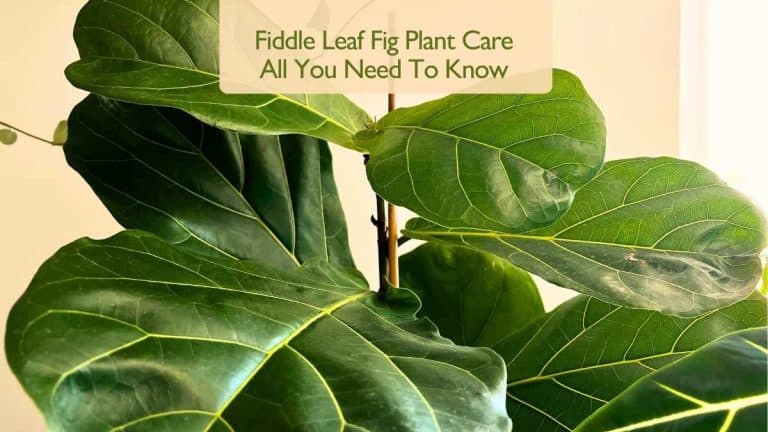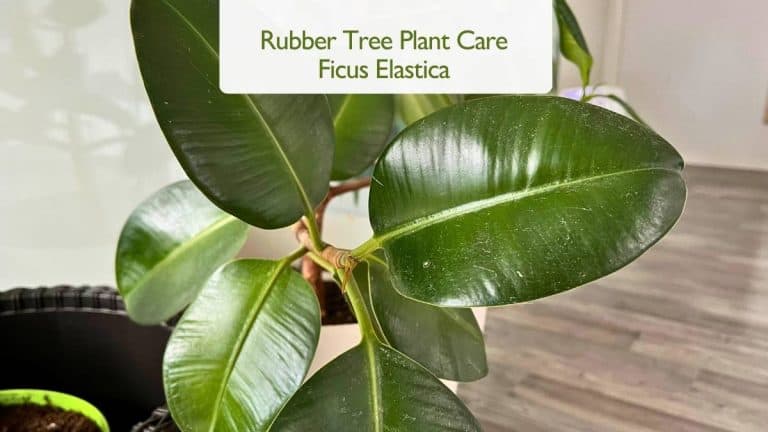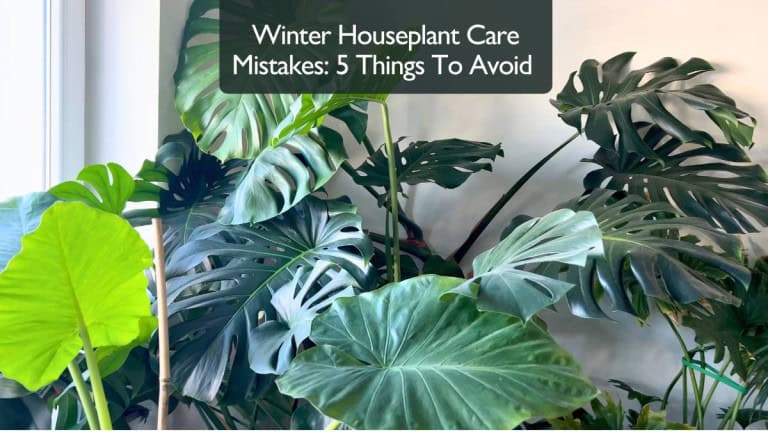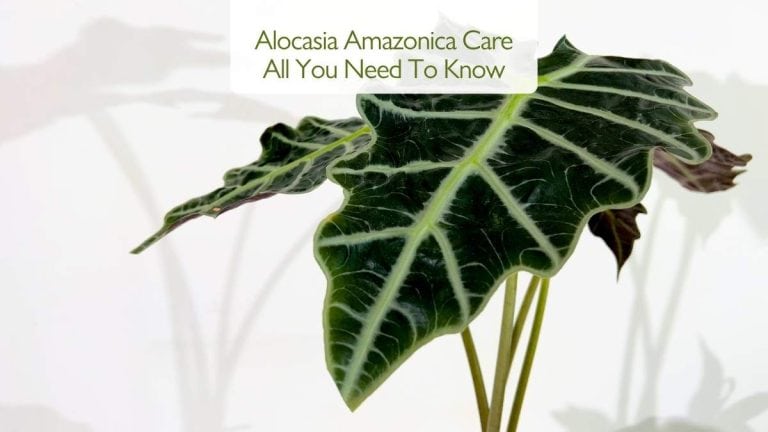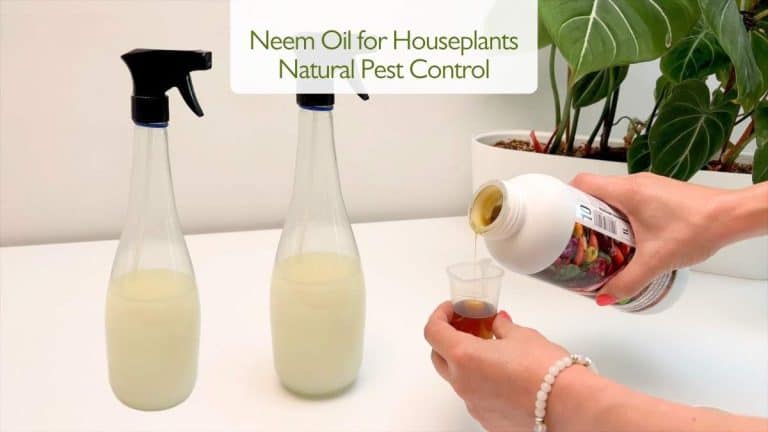Fiddle Leaf Fig Plant Care: How to Keep Your Ficus Lyrata Healthy and Thriving
The Fiddle Leaf Fig (Ficus lyrata) is one of the most popular and visually striking houseplants today. Known for its large, glossy leaves and bold architectural presence, it can transform any space into a lush, tropical haven. But despite its popularity, many plant lovers struggle with proper Fiddle Leaf Fig plant care, leading to common problems like leaf drop, brown spots, and leggy growth.
If you’ve been facing challenges with your Fiddle Leaf Fig or want to prevent future issues, this comprehensive guide will help you understand the essential care needs of this beautiful plant. I’ll also share tips to keep it healthy and vibrant so you can enjoy its impressive foliage for years to come.
For a quick visual guide, you can watch my video on Fiddle Leaf Fig Problems: 6 Mistakes to Avoid below, or if you prefer reading you can read more here.
Click here to watch the video on YouTube
Light Requirements for Fiddle Leaf Fig Plant Care
Fiddle Leaf Figs thrive in bright, indirect light, which closely mimics their natural tropical environment. They appreciate being near a sunny window but dislike direct, harsh sunlight that can scorch their large, glossy leaves and cause unsightly brown spots. Ideal locations include a few feet away from an east-facing window or a filtered south-facing window where they can receive several hours of gentle, diffused sunlight each day.
Insufficient light is one of the most common causes of poor growth and leaf drop in Fiddle Leaf Fig plant care. If your plant’s leaves begin turning yellow or brown, or if it grows leggy with sparse foliage, these are clear signs it needs more light. Providing adequate light not only improves growth but also enhances the rich green color and overall vitality of your plant.
Watering Your Fiddle Leaf Fig Correctly
Watering is a crucial and sometimes tricky aspect of Fiddle Leaf Fig plant care. Overwatering is a frequent mistake that can lead to root rot, a serious condition where roots suffocate in soggy soil. Symptoms of overwatering include yellowing leaves, a mushy stem base, and eventually leaf drop. On the other hand, underwatering causes drooping leaves, crispy edges, and also leaf loss due to drought stress.
To water your Fiddle Leaf Fig properly, regularly check the soil moisture by inserting your finger about two inches deep. Water only when the soil feels dry at this depth to prevent overwatering. Always use a well-draining potting mix and ensure your pot has drainage holes to let excess water escape, maintaining a healthy balance of moisture and air around the roots.
Humidity and Temperature Needs

Being a tropical species, the Ficus lyrata thrives in warm temperatures and prefers moderate to high humidity, making these factors essential in your Fiddle Leaf Fig plant care routine. The ideal temperature range is between 65-75°F (18-24°C). Keep your plant away from cold drafts, air conditioners, or heating vents, as sudden temperature fluctuations can cause stress and leaf drop.
Low humidity levels, common in heated indoor environments during winter, can cause brown leaf edges and slow overall growth. To boost humidity, mist your plant occasionally, place a humidifier nearby, or set the pot on a pebble tray filled with water. These small steps can dramatically improve leaf health and your plant’s comfort.
Pruning and Maintenance Tips – Fiddle Leaf Fig plant care
Pruning is an important part of Fiddle Leaf Fig plant care to encourage a balanced, bushy shape and remove damaged or yellowing leaves. Use clean, sharp scissors or pruning shears to prevent infections when trimming. Regular pruning also stimulates new growth and helps maintain an attractive form.
It’s important to note that Fiddle Leaf Figs don’t like frequent moving or relocation, as this can stress the plant and lead to leaf drop. Once you find a spot with appropriate light and temperature, try to keep your plant there to allow it to settle and thrive.
Common Pests and How to Prevent Them
Even with proper care, Fiddle Leaf Figs can occasionally attract pests such as spider mites, mealybugs, and scale insects. Regular inspection is a key component of Fiddle Leaf Fig plant care – check the undersides of leaves and the stems for any signs of infestation.
At the first sign of pests, treat your plant with insecticidal soap or neem oil spray. Keeping the leaves clean by wiping them gently with a damp cloth also helps prevent pests by removing dust and potential eggs.
Signs of Stress and How to Respond
Yellowing leaves, brown spots, and leaf drop are often signs your Fiddle Leaf Fig is stressed. These symptoms can result from overwatering, underwatering, low humidity, or pest issues. Careful observation and adjusting your watering schedule, light exposure, humidity, and pest control measures can help your plant recover.
Remember, patience is essential; plants take time to bounce back once their environment improves.
Propagation Tips for Fiddle Leaf Fig Plant Care
Propagating your Fiddle Leaf Fig is a rewarding way to expand your indoor garden and deepen your connection with this stunning plant. The most common and effective method of propagation is through stem cuttings. To propagate, select a healthy stem with at least two or three leaves and cut just below a node. You can root the cutting in water or directly in moist, well-draining soil.
Keep the cutting in a warm, bright spot with indirect sunlight and maintain consistent moisture without waterlogging. Roots typically develop within a few weeks, signaling that your new plant is ready to be potted and cared for.
Including propagation in your Fiddle Leaf Fig plant care routine not only helps you multiply your plants but also encourages fuller, bushier growth in your original plant when pruning is done regularly.
Final Thoughts on Fiddle Leaf Fig Plant Care
With the right balance of light, watering, humidity, pruning, and pest management, your Fiddle Leaf Fig can become a stunning and healthy centerpiece in your home. Understanding and meeting its specific care requirements will reward you with vibrant foliage and a flourishing plant that enhances your living space.
Fiddle Leaf Fig Plant Care Problems and How to Avoid Them
For more detailed tips and a visual walkthrough, watch my video Fiddle Leaf Fig Problems: 6 Mistakes to Avoid | Ficus Lyrata below. It covers the most common issues and practical solutions to keep your Fiddle Leaf Fig thriving.
Explore More Music for Your Plants & Stay Connected!
Check out my Playlist: Music for Plants and find the perfect tunes to help your plants and yourself thrive.
Don’t forget to visit my YouTube Channel Plant House & Garden and subscribe — your support means the world to me!
Connect with me on social media for more plant care tips and music updates: Instagram | Facebook | X | Pinterest | Reddit | TikTok
Love plants? Love music? Don’t miss out on new updates — hit subscribe and follow now to keep your plants happy and your space vibrant!

